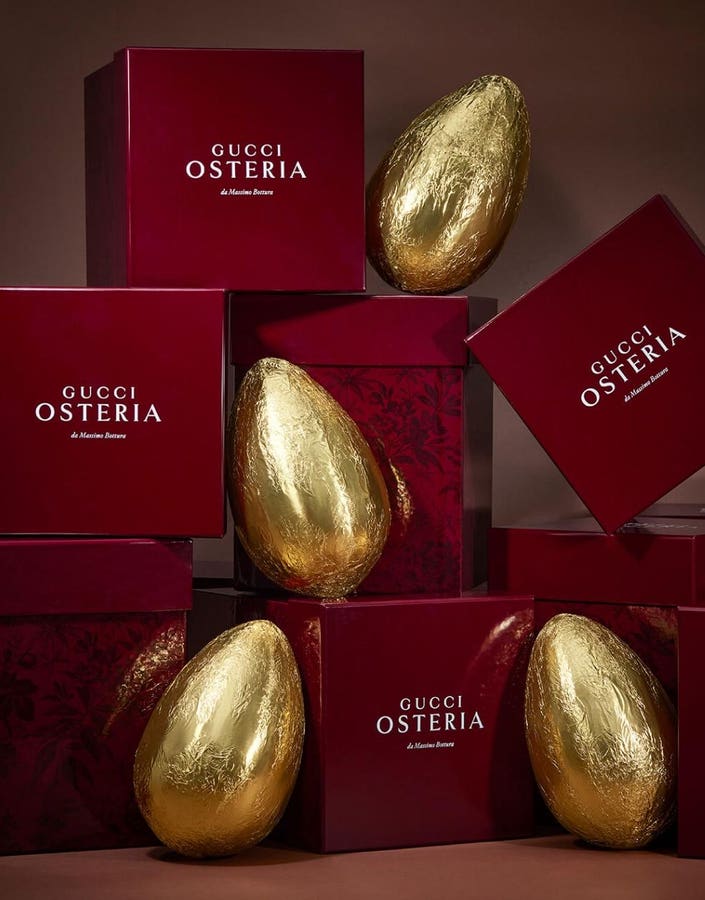Gucci Osteria Chocolate Egg – tradition and indulgence, this chocolate egg is crafted together with … More
The Easter egg—once a grocery-store staple wrapped in foil—is now commanding headlines, luxury price tags, and social media attention. For a growing number of consumers, it has become more than a seasonal treat. It’s a signal. It’s a story. And it’s a compelling example of seasonal premiumisation at its most effective.
While other calendar moments have long been commercialised, Easter has remained relatively modest—until now. In the last three years, the rise of the luxury Easter egg has reframed the season as a retail event with emotional depth, visual appeal, and high-margin opportunity. And brands are responding with artistry, scarcity, and strategy.
Seasonal Premiumisation: Turning Tradition into Margin
Louis Vuitton (available in Paris, New York, Singapore and Shanghai) Maxime Frédéric, Pastry Chef … More
Retailers have long known that seasonal spikes can yield exceptional results. In grocery, a well-executed seasonal activation can lift category sales by 20–30%. But premiumisation elevates that further. It allows brands to drive margin without scale—offering limited-edition items that hold emotional resonance and avoid discount fatigue.
In today’s cautious-yet-curious consumer landscape, Easter has become the perfect testing ground for this approach. The pressure to spend is lower than at Christmas, and the sentiment is more joyful than transactional. For the consumer, a luxury egg is a way to mark the season meaningfully. For the brand, it’s an invitation to tell a richer story.
Status Symbol Gifting: The New Language of Chocolate
Each egg is wrapped in signature black and white chevron foil and tied with a black satin bow, … More
The modern Easter egg is no longer just confectionery. It’s becoming a status symbol, particularly among consumers who value design, craftsmanship, and shareable experiences.
At Gucci Osteria in Florence, the house’s culinary arm offers a €120 chocolate egg adorned in Gucci’s unmistakable visual language. It’s a product that carries as much brand equity as a handbag. This is chocolate as extension of lifestyle—designed not simply to be consumed, but admired, gifted, and documented.
Louis Vuitton’s €145 Le Chocolat Maxime Frédéric egg follows a similar path. Styled in the shape of the brand’s iconic trunks, complete with monogram embossing and padlocks, it’s an edible replica of heritage. This is brand storytelling rendered in cocoa—an object of beauty, scarcity, and cultural shorthand.
Back in the UK, Claridge’s offers a more restrained but equally meaningful take. Their £45 milk chocolate egg, elegantly hand-piped and presented in signature green, draws directly from the hotel’s Art Deco roots. Here, the power lies in subtle luxury—heritage made tangible.
Cédric Grolet, the French patisserie artist, takes a sculptural approach. Known for reimagining desserts as fine art, Grolet’s eggs have become objets d’art for the social media generation—designed to be photographed, admired, and then, eventually, eaten. They are luxury in experience as much as in form.
At the more accessible end of the scale, Läderach’s 23cm Bunny Cleo figure blends Swiss quality with … More
At the more accessible end of the scale, Läderach’s 23cm Bunny Cleo figure blends Swiss quality with playful elegance. Priced at £35, it offers what many consumers are seeking: attainable luxury. A product that feels thoughtful, beautifully made, and worthy of the moment.
What Makes an Easter Egg ‘Luxury’? Common Denominators Across the Category
Cédric Grolet, the French patisserie artist, takes a sculptural approach. Known for reimagining … More
While the executions vary, the most successful luxury Easter eggs share a set of clear, strategic attributes.
First, craftsmanship. Whether hand-piped, moulded or embossed, these products carry visible evidence of artistry and care. The design is deliberate, often drawing on other disciplines—architecture, fashion, or sculpture.
Second, brand storytelling. Each egg extends the DNA of the house it comes from. Whether it’s the iconic green of Claridge’s or the structural references of Louis Vuitton, these aren’t just chocolates. They’re narratives, compressed into a seasonal window.
Scarcity is also critical. Many of these products are available in limited numbers or through exclusive channels. This drives urgency and elevates perceived value—especially in a category that’s traditionally been over-supplied and under-valued.
Then there’s packaging. These products are presented with the same care as a piece of jewellery. Presentation becomes part of the performance—and part of the justification for the price.
Finally, there is emotional resonance. The luxury egg has become a vehicle for modern gifting—offering beauty, thoughtfulness, and novelty without the long-term commitment of a keepsake. It’s generosity, simplified.
The Business Case: Margin, Visibility, and Social Amplification
The rise of the luxury Easter egg isn’t just a charming seasonal trend—it’s a highly calculated move by brands looking to deepen consumer connection, expand product repertoire, and generate high-impact visibility.
With luxury brands increasingly entering lifestyle and culinary categories, Easter presents a short-window opportunity to release product with immediate relevance and long shelf-life online. Social media has amplified this trend significantly—turning a simple gift into shareable content that extends far beyond the recipient.
And unlike some traditional luxury categories, the seasonal premiumisation model requires neither high commitment from the consumer nor high inventory risk for the brand. It’s nimble. It’s visual. And it’s effective.
Easter may never rival Christmas in scale, but its evolution is proving to be a blueprint for how brands can turn sentiment into margin, and rituals into relevance.

